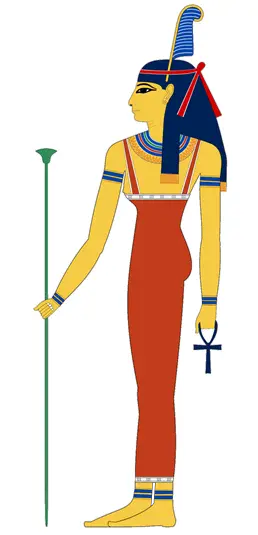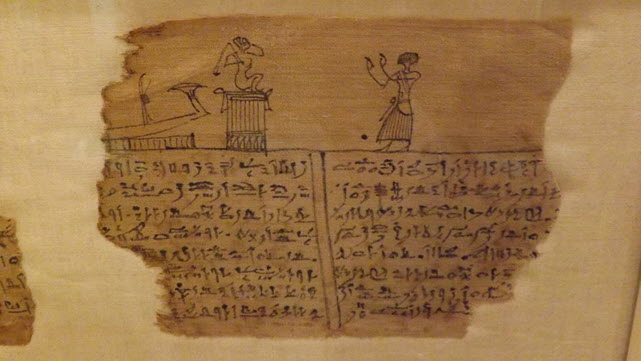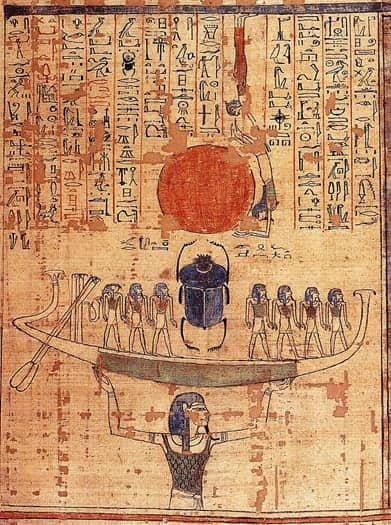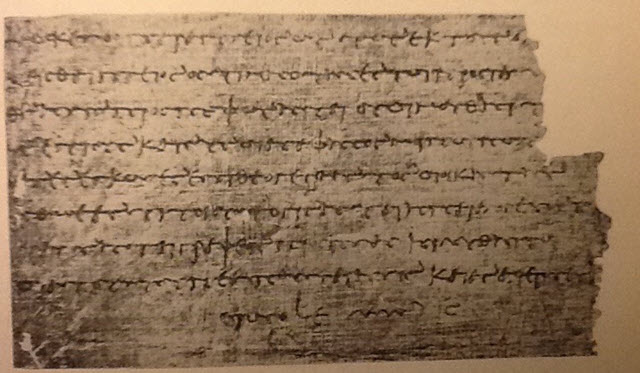Ancient Egyptian religion was a system of diverse beliefs and rituals forming a crucial part of Egyptian culture.
It surrounded itself with multiple deities and pharaohs. At the same time, Egyptians performed various offerings, prayers, ceremonies, and festivals, to be in the good favor of all the deities.
Religion played a role in every sector of their lives as they believed to continue their journey on earth even after death, they had to live a life worthy of being continued.
The people of Egypt were to apply Ma’at’s principle of harmony in their daily lives as their actions were thought to affect the lives of other people, knowingly and unknowingly.
To keep balance, they were expected to depend on each other and maintain a harmonious existence to help the gods perform their tasks better.
What religion did ancient Egyptians believe in?
Content
The ancient Egyptians were polytheistic, believing in multiple gods. They thought that gods and goddesses controlled the forces of human nature and the supernatural world.
How was mummification associated with Egyptian beliefs?
Ancient Egyptians believed that mummification would preserve the body for use in the afterlife.
Egyptian Gods and Goddesses
As per the Egyptians, nature was ruled by divine forces such as animals, wind, sun, and moon. Deities and religious practices were believed to contain them for human advantage.
The roles that these gods played from major to minor. The devil was thought to have a minor role. They considered deceased pharaohs divine entities, and sometimes even ordinary people like Imhotep were declared deities.
The god Montu was the initial patron of the city of Thebes, who Amun later replaced. In this manner, the gods were replaced with passing the time and importance.
There was an interrelationship among the deities, and they were grouped based on the sustained forces. A family combination of deities was popular where all the family members were honored and worshipped simultaneously.
Another popular combination called Syncretism was popular, where multiple gods combined and formed a single deity, and one god’s presence was considered another god.
Some gods were capable of mixing into other mixed forms. Amun, associated with hidden power, was connected with Ra, the Sun God. This resulted in the combination Amun-Ra becoming the most prominent force in nature.
Some goods were declared more potent than others, Horus, Isis, and Ra. Amun, however, was the most powerful, with the divine power.
Cosmology

The universe was believed to revolve around Ma’at, representing harmony, justice, order, and truth. It was the universe’s eternal order as was represented by a goddess.
They believed Ma’at was under a constant threat from the power of disorder and that society was responsible for maintaining it.
A person aligned with gods and light instead of the dark and chaos by worshiping Ma’at, which accessed their entrance to the Hall of Truth after their death and a favorable judgment by the Lord of the Dead, Osiris.
The rulers of Egypt were the Pharaohs believed to possess divine powers and acted as a mediator between gods and their people. Rituals and offerings were presented to maintain Ma’at to maintain harmony and repel disharmony.
Egyptians laid offerings and rituals to satisfy the gods, maintain Ma’at and keep disharmony away. They believed that periodic events would renew Ma’at, such as the transfer of power from one king to the other and the flood of the Nile river.
They thought the earth was flat and was ruled by the Egyptian god Geb and the sky over it was ruled by goddess Nut.
Between the two was ruled by Shu, the air god, while below the earth was believed to have an underworld that was under the rule of Nu.
Egyptians believed in a place called Duat, a space meant for death and the afterlife. Ra traveled to the earth every day, and during the nighttime, he traveled across the Duat to be born again in the morning.
They believed in three beings- gods, the spirits of the dead, and living humans. They believed the spirits were loved in a sacred place with numerous gods’ powers.
Pharaohs were the highest in humans and acted as mediators between the divine and ordinary humans. They were thought to be a reincarnation of divine beings and were associated with deities like Horus, representing kingship, and God Ra’s son, ruling and regulating nature.
Life after death

The Egyptians believed in the fact that human beings possessed the life force, Ka, that would leave the body at death fueled by food and drinks. This led to giving offerings to Ka for it to exist even after death.
Similarly, Ba was the characteristic differences in each person and remained with the body.
Funerals were held to release Ba for it to travel freely and later unite with Ka to live as an Akh. The Egyptians preserved the dead bodies as mummies so that Ba could return to its body and get a new life in the morning as Akh.
The deceased pharaohs ascended to the sky and lived with the stars. Egyptians believed that the soul had to go through Duat’s dangerous situations. And the final verdict, which was under the control of Osiris and Ma’at, was termed Weighing of Heart.
Here, the actions of an individual when they were alive were judged to see if they behaved by Maat. Their Ka and Ba united to form an Akh if their actions proved worthy. The dead were believed to roam around in the land of Osiris, which was a pleasant land in the underworld.
Mythology

The Egyptian myths explained the actions and roles of gods with their relation to nature. The events detailed divine events with myths and their different aspects from the perspective of some symbols.
The roles of deities were derived from hymns used in rituals, and the texts talked about the actions of gods related to mysterious mythical events and their roles in the afterlife.
Per the myth, the world emerged from the chaotic ocean and in a dry form as the sun was vital to life on earth. Hence, Sun God Ra’s first rise was taken as the dry space’s rise time.
The most important myth, the Osiris myth, talks about the divine ruler Crisis and his brother Set – the god of chaos. As per this myth, Set murdered his brother Crisis due to jealousy.
His wife Isis and sister brought him back to life to give birth to an heir, Horus, after which he went into the underworld to rule the dead. Eventually, he became the King after defeating the god of Chaos – Set.
This event led to the tradition of the succession of pharaohs and depicting them as the makers of order. The agricultural cycle of Ancient Egypt is directly linked with the events of Osiris’s death and his rebirth.
Ritual, magical texts, hymns, prayers, and funerary texts

The instructions for the processes of religious rituals were written on papyri and kept in the Egyptian temples’ libraries.
Magic texts described spells related to rituals used for certain gods in daily life.
Prayers and hymns were written as poetry that, despite being similar in structure, were differentiated by their purposes and specific gods and goddesses. The hymns talked about theology, while prayers talked about gods personally.
They were used to pray for blessings, guidance, or forgiveness for wrongdoings.
Funerary texts were essential and were preserved in writings to ensure the reaching of the deceased souls to a comfortable afterlife. The texts on the Pyramids were inscribed to make the pharaohs join the gods after their death through magic.
Temples and festivals

The temples served the spirits of the deceased pharaohs and the gods and were not open to ordinary people. Temples were where the gods resided in with their physical images to sustain gods in expectations of them to maintain the world.
The early Egyptian temples were comparatively tiny and later became solid structures built with stones. A standard temple structure included a central ceremonial way that led through multiple halls up to the sanctuary.
A statue of the temple’s god was placed inside the sanctuary, accessible only to the pharaohs and the highest-ranking priests.
The temple was surrounded by a wall with many smaller buildings between the two used for workshops, storage, and a library of sacred writings.
The temple’s rituals were carried out essentially by the pharaoh; however, the priests would do it daily. Chanters and musicians were the temple staff, laborers worked to supply the temple’s needs, and farmers worked in the temple areas.
They were all paid with the temple’s income, which became a part of their primary source of employment and economy.
The state’s religious practices consisted of temple rituals and sacred kingship ceremonies. Likewise, the festivals of Sed and the coronation ceremony were carried out to preserve the pharaoh’s strength. The temple rituals were carried out daily, annually, or rarely.
The offering ceremony was very common. Here, a priest with the highest rank washed and dressed the god’s statue daily and presented offerings in front of it. The offerings were later given to all the present priests as the spiritual essence.
Numerous festivals were carried out in ancient Egypt where people re-enacted myths and performed acts symbolizing the destruction of the forces of destruction. These festivals were usually held inside the premises of the temples.
At Opet Festival, they carried out god statues in baroque to visit temples of related gods. People came together to witness and receive the offerings as the spiritual essence.
The Egyptians also practiced oracle knowledge and guidance by god, where both ordinary people and the king took part. The priests carried these processes and interpreted answers from the baroque’s movements.
Animal cults and oracles

In many places, Egyptians worshipped animals believing they represented particular deities. They were selected based on specific sacred markings indicating their fitness for the roles.
The Apis bull was worshipped as a manifestation of Ptah in Memphis; millions of cats, birds, and other animals were mummified and buried at temples honoring Egyptian deities.
The Egyptians also practiced oracles to request the gods for knowledge and guidance, and people from all classes, including the king, took part in it. For the kings, the answers were used to settle legal disputes or make royal decisions.
The priests carried out these processes, giving them great power, and they did so during festivals and interpreted answers from the baroque’s movements.
Conclusion
The ancient Egyptian beliefs and practices revolved mainly around the divine. There are three primary mythic cycles: the creation of the world, the maintenance of the world, and the Osiris cycle. These reasoned the kingship and funerary rites.
Religion was essential in their everyday lives. They believed they needed a harmonious life to continue life after death. They believed creating a harmonious life satisfied the gods that helped them perform better in their tasks.
The Egyptians focused on two main characters: the king and the gods. The king was considered to be the mediator between the gods and humans. Meanwhile, the gods were known for their wide variety of forms.
They were believed to manifest in animal and mixed forms, with a human body having an animal head.
